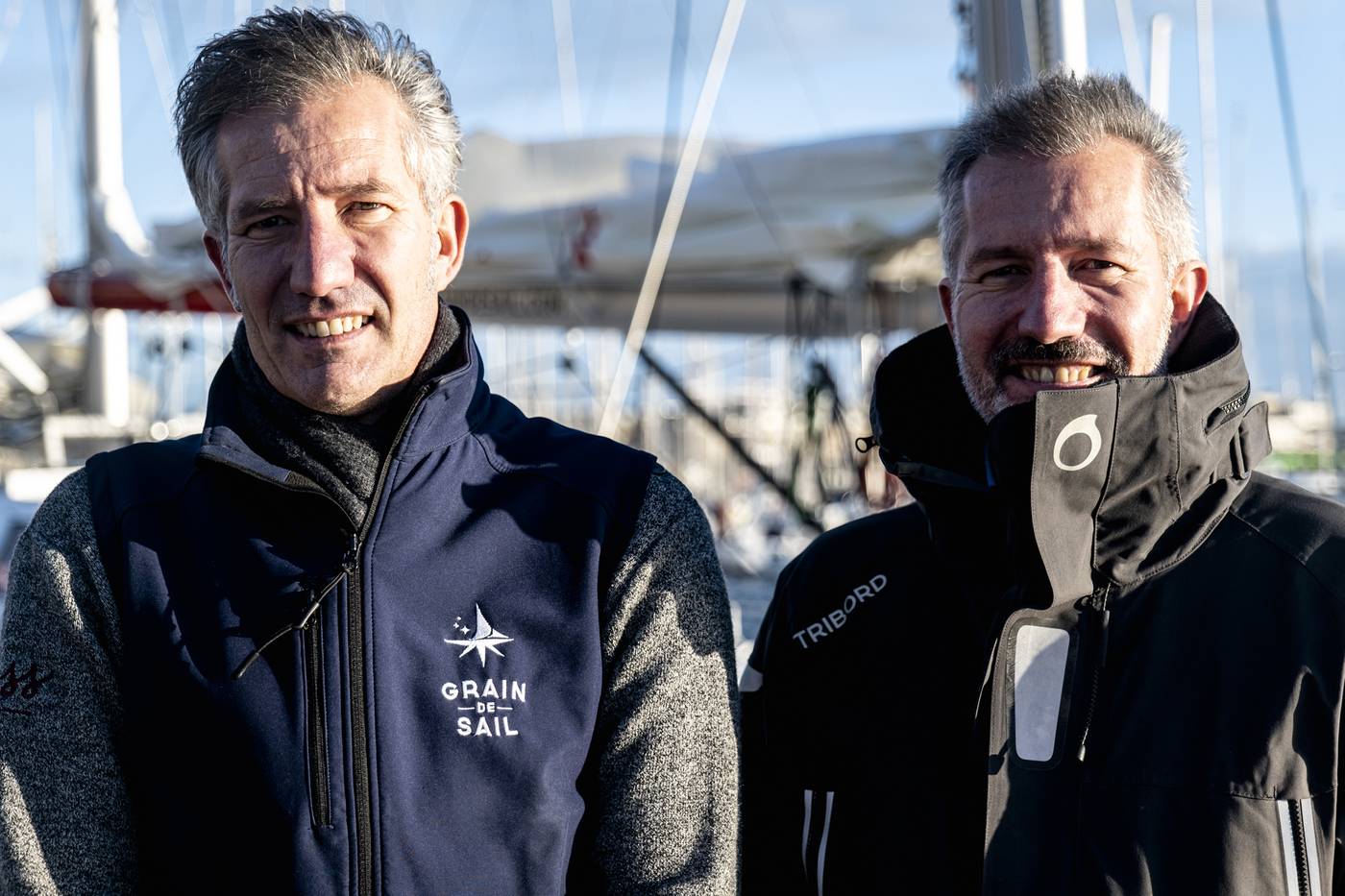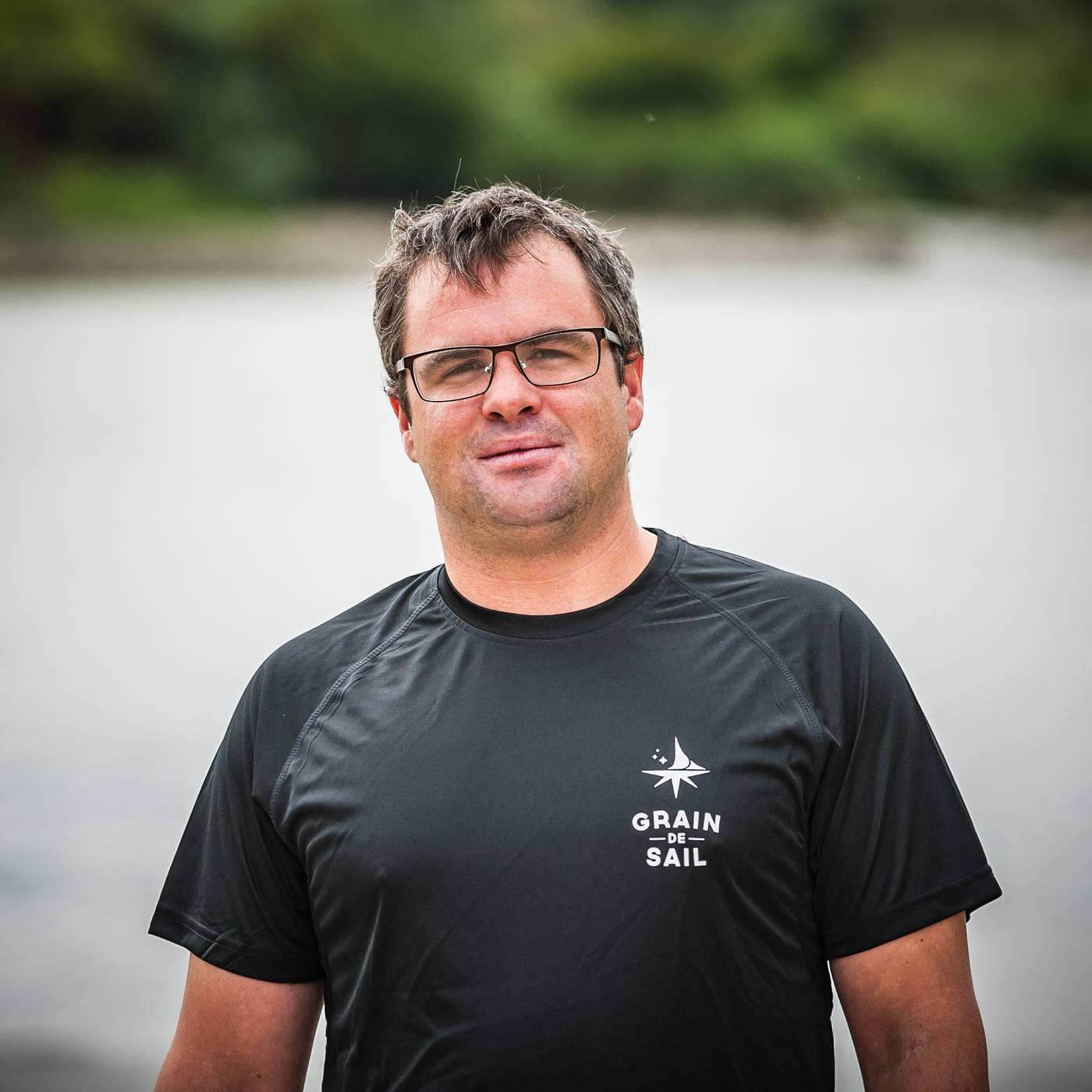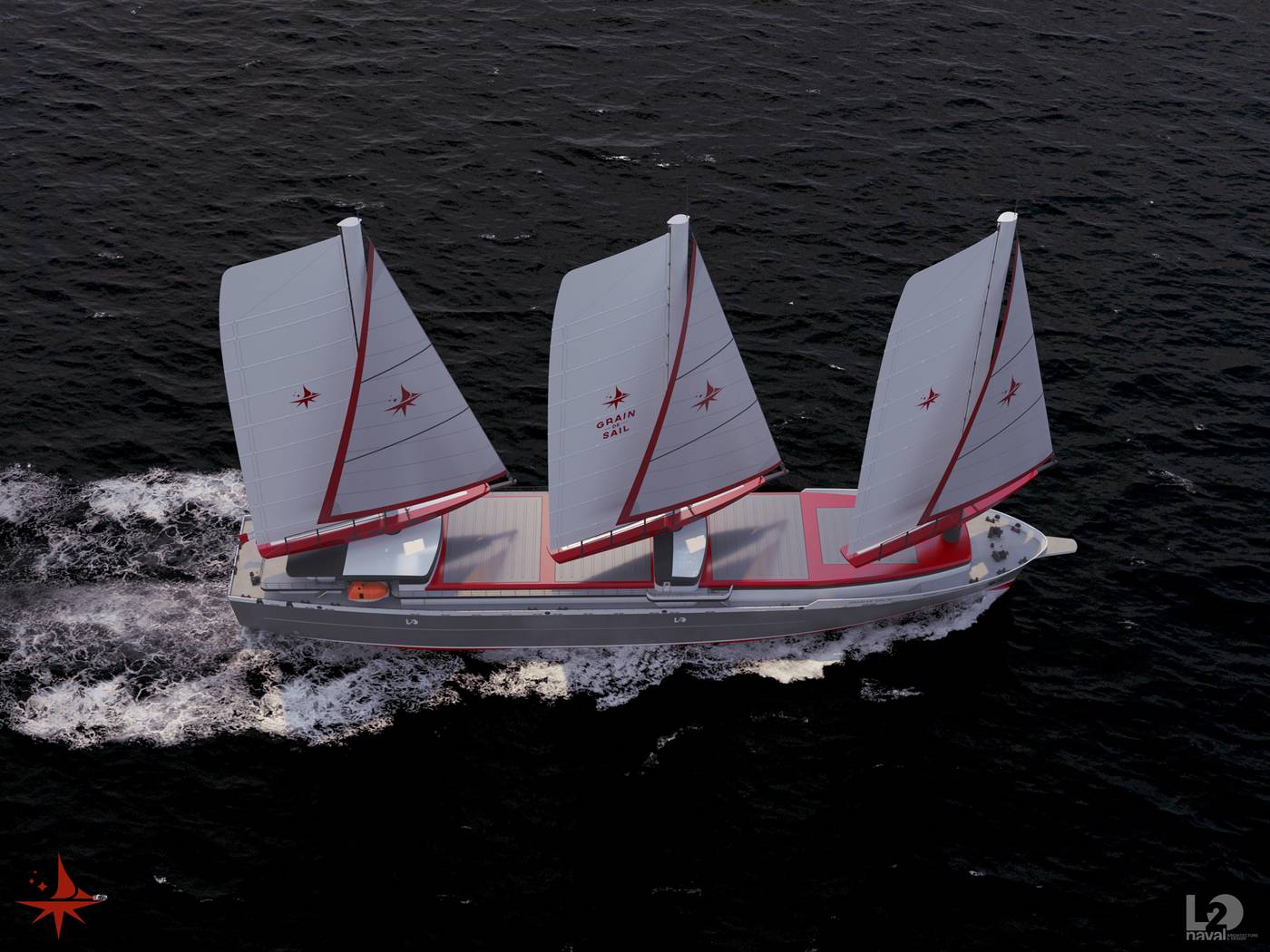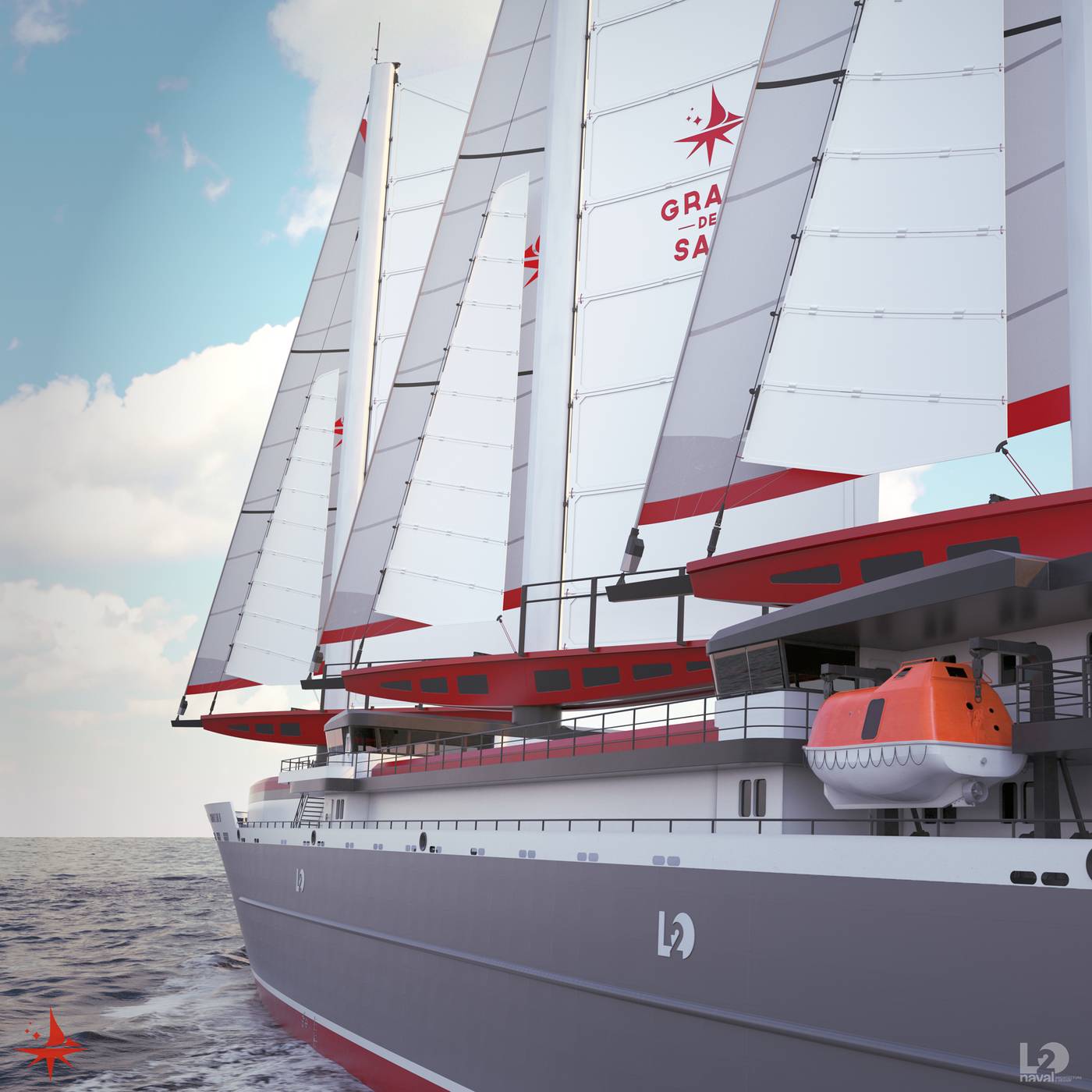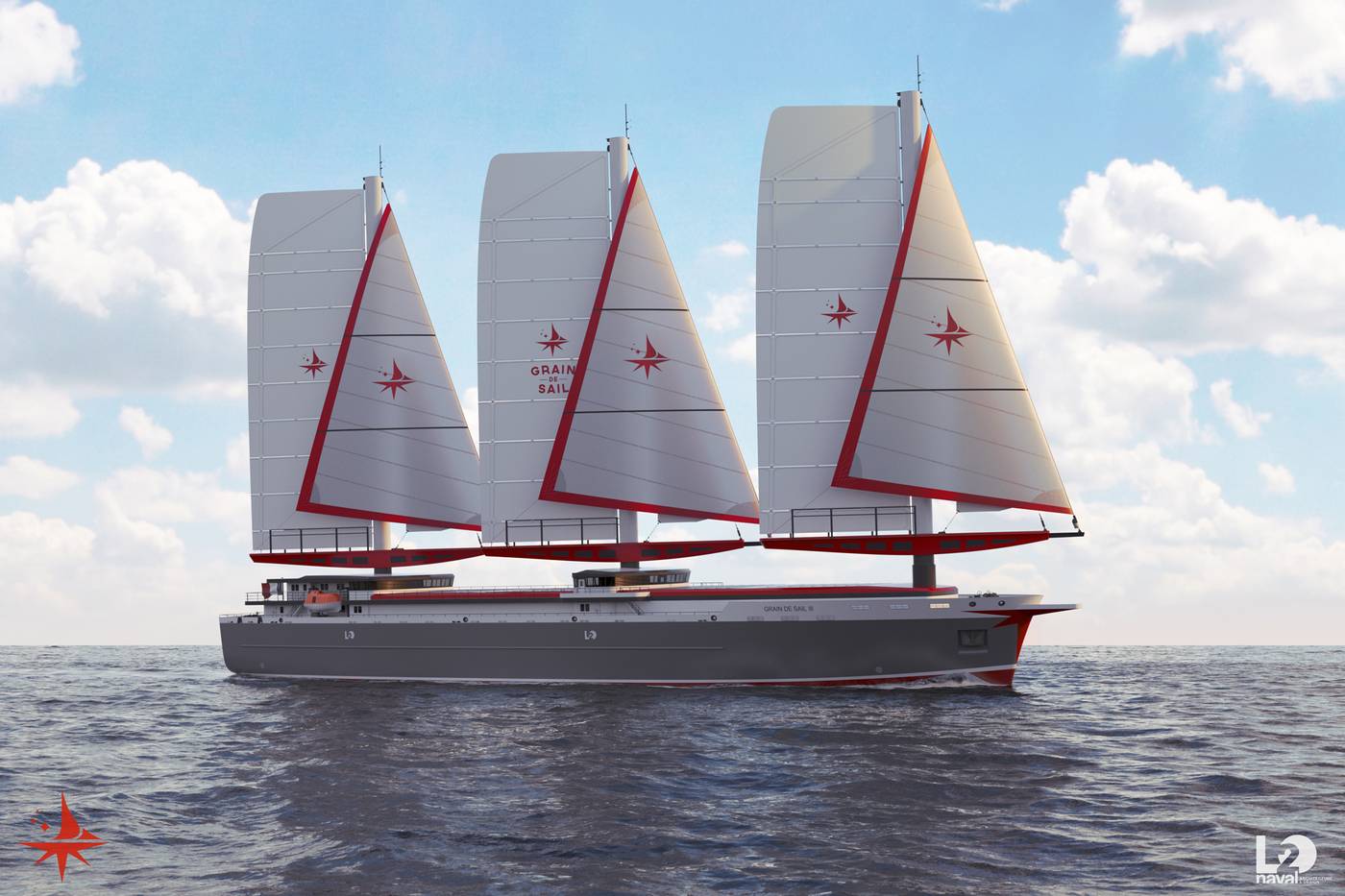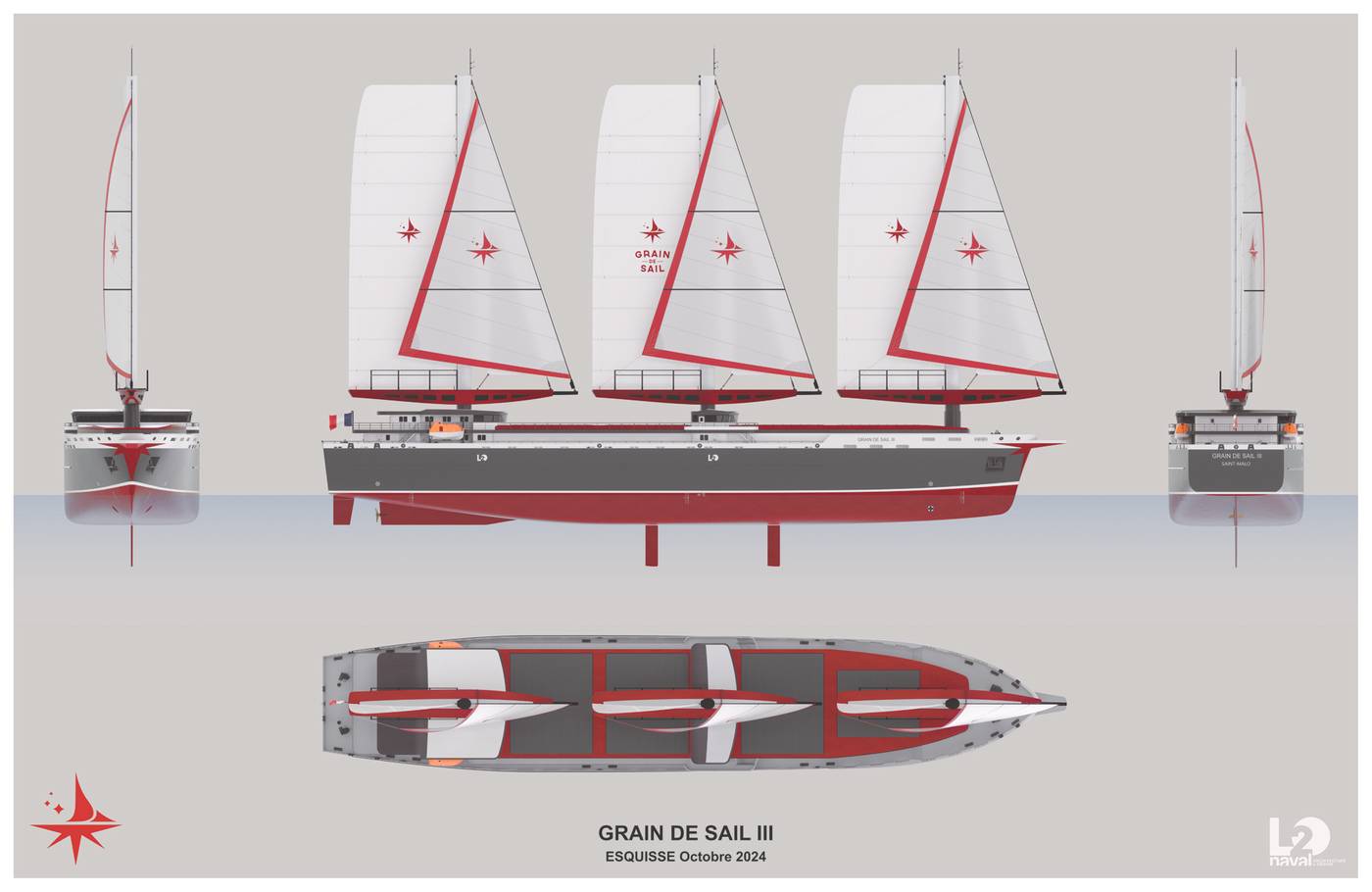Tech File
Wind Propulsion
Sailing Towards a Greener Future
Grain de Sail’s Vision for Wind-Powered Cargo Ships
[Earlier this year Maritime Reporter TV has a conversation with Stefan Gallard, Marketing Director, Grain de Sail, on the company’s expansion of wind-powered cargo ships. Following is a synopsis of the video interview.]
The maritime industry is at a crossroads, as with increasing pressure to reduce carbon emissions, shipowners and logistics providers are seeking innovative solutions for sustainable shipping. While many turn to alternative fuels and hybrid propulsion systems, one company is reviving an age-old technique to meet modern sustainability demands: wind power. Grain de Sail, a French company founded on a bold vision, is pioneering commercial cargo ships powered exclusively by wind, hoping to prove that the future of shipping may indeed lie in the past.

Small Company, Big Idea
At first glance, Grain de Sail may seem like an unlikely disruptor in global shipping. With just 70 employees and projected 2024 revenues of €14 million, it operates at a fraction of the scale of industry giants. Yet, its impact extends far beyond its size. The company’s business model seamlessly integrates food production and sustainable maritime transport, shipping high-quality chocolate from France to the U.S. using its own wind-powered cargo vessels. This unique approach allows it to be both the cargo owner and the shipowner, eliminating the need for external freight contracts—at least in its early years.
Grain de Sail was founded by twin brothers with a background in renewable energy, specifically onshore and offshore wind farms. Their expertise in wind technology led them to a key realization: if wind power could generate electricity, why couldn’t it also move goods across the ocean? The challenge, however, was financial viability. Traditional cargo operators rely on economies of scale, and wind-propelled ships were historically small, limiting their ability to compete with massive fossil-fueled container ships. The brothers' solution was groundbreaking: create a vertically integrated business that would generate its own shipping demand through a high-end food brand, effectively financing the maritime operation.
Scaling Up: A Fleet Designed for the Future
Grain de Sail launched its first vessel in 2020, a 72-foot (24-meter) sailing cargo ship with a payload capacity of 50 tons. While effective as a proof of concept, it quickly became clear that scalability was the next, bigger challenge. Enter Grain de Sail II, a 52-meter vessel with 350 tons of capacity, launched in early 2024. While the new vessel was twice the length of its predecessor, its wider, taller hull allowed for nearly eight times the cargo volume. The real breakthrough, however, will come with Grain de Sail III, currently in the final design phase and scheduled for launch in 2027. This 110-meter vessel will mark a paradigm shift in wind-powered cargo shipping, transitioning from pallet-based transport to a containerized model, significantly enhancing efficiency and compatibility with global shipping infrastructure. The ship will have the capacity to transport 200 TEUs (20-foot equivalent units) while remaining purely wind-powered.
Unlike hybrid wind-assisted vessels, Grain de Sail’s ships rely solely on the wind for propulsion, using solid sail technology developed by Chantiers de l’Atlantique in France. These rigid sails offer greater efficiency and durability than traditional fabric sails, while a rotating mast system enables optimal wind capture in all conditions.
Beyond propulsion, energy autonomy is a key focus. The ships use hydro generators, where propellers spin in reverse as the vessel moves, capturing kinetic energy and converting it into electricity. Large solar panels supplement this power, ensuring that all onboard systems—from navigation to CCTV and hydraulics—operate without relying on fossil fuels.
The company also pioneered the first-ever use of a wood pellet boiler on a commercial vessel, replacing diesel-based heating systems with a low-carbon alternative sourced from locally produced wood waste in France.
Wind-Powered Cargo: The Economic Reality
One of the biggest hurdles for wind propulsion is cost.
Grain de Sail’s freight rates are currently 2–5 times higher than those of conventional cargo ships on transatlantic routes. However, as sail-powered vessels scale up and rigging systems improve, operational efficiency will increase.
The company’s expansion into freight forwarding services for third-party clients marks a significant shift. Originally, the business was structured to transport its own goods, but as interest grew from external cargo owners, Grain de Sail saw an opportunity to evolve into a sustainable logistics provider. With larger ships and improved economies of scale, it aims to make wind-powered transport a competitive alternative in the near future.
Building and operating a commercial sail-powered cargo ship presents unique design challenges. Unlike conventional vessels, wind-powered ships must account for side drift, requiring careful hull design to maximize forward momentum while minimizing lateral movement. Additionally, maintaining a favorable wind-to-weight ratio is critical to ensuring sufficient propulsion without relying on auxiliary engines.
The industry standard metric for shipping emissions is CO2 emitted per ton per kilometer. While conventional engines currently achieve 8–10 grams per ton per kilometer, Grain de Sail’s vessels reduce this figure to 1–2 grams, achieving over 90% decarbonization.
With the launch of Grain de Sail III, the company will take another major step toward providing economies of scale and mainstreaming wind-powered shipping.
